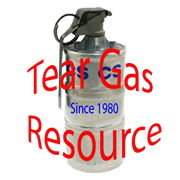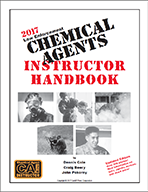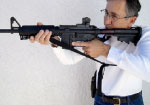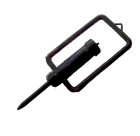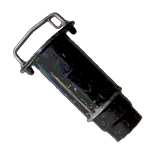"May the Proper Force Be With You!"
Law enforcement agencies are getting constant pressure from their communities to use less force than we have in the past. In an attempt to satisfy that pressure most agencies are becoming very dependent on the use of less-lethal and non-lethal force options. Of 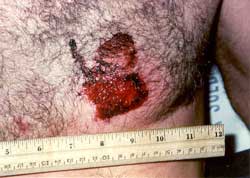 these options officers have been using tools that are called extended range batons, beanbags, impact weapons, PepperBall, Tasers, etc. In law enforcement's zealousness to use these tools we have abused some of them. There are many more lawsuits as a result of our attempts to use safer alternatives. Some of these lawsuits are a result of law enforcement not understanding the ramifications of the use of kinetic energy as a use of force.
these options officers have been using tools that are called extended range batons, beanbags, impact weapons, PepperBall, Tasers, etc. In law enforcement's zealousness to use these tools we have abused some of them. There are many more lawsuits as a result of our attempts to use safer alternatives. Some of these lawsuits are a result of law enforcement not understanding the ramifications of the use of kinetic energy as a use of force.
How do we measure and know what is the least amount of force? Every Officer intuitively knows that kinetic energy is directly related to injury and sometimes death. When training officers on the use of these types of impact devices is it enough to only equip them with the knowledge that the manufactures impart on the safe use of the devices? We should not rely on information given us from manufacturers. Most of them are honorable but their bottom line is to sell law enforcement product. Law enforcement officers should spend some time learning what kinetic impact is and how safe or dangerous it can be.
We should be concerned with how hard an object strikes a suspect. The measurement of that impact is in kinetic energy. Some people refer to the kinetic impact as Joule Units or "J". Joule is a 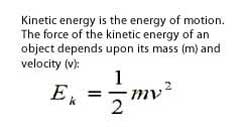 measurement of energy and kinetic impact is the measurement of force caused by that energy. Kinetic Energy is measured and referred to foot-pounds of pressure. There is a direct correlation between Joule and Kinetic Energy. In fact if you multiply Kinetic Energy or foot-pounds by 1.355818 you will get the equivalent in Joule.
measurement of energy and kinetic impact is the measurement of force caused by that energy. Kinetic Energy is measured and referred to foot-pounds of pressure. There is a direct correlation between Joule and Kinetic Energy. In fact if you multiply Kinetic Energy or foot-pounds by 1.355818 you will get the equivalent in Joule.
In other words, both the mass and the speed of an object determine how much energy it has, and thus, how much work or how hard it will strike an object. When dealing with less-lethal and non-lethal devices the same physics apply. The heavier the tool, the faster the tool, and the greater the stopping force.
Simply stated, if we reduce the velocity of a "bag of lead shot" enough, we can get kinetic energy levels that may maim but not kill in most circumstances. Therefore, these are called less-lethal devices. If we go further and reduce both the projectile mass and the velocity or use the same velocity but make a low mass projectile frangible on impact, we get kinetic energy values that are truly non-lethal even at the muzzle. These are called non-lethal devices. The difference is the kinetic energy and potential injury to the target.
In the 1970's the U.S. Army Land Warfare Laboratory conducted research and published a report on blunt impact weapons which resulted in a finding that impact energies between 30 and 90 foot pounds are 'dangerous', i.e. contusions, abrasions, broken ribs,  concussions, loss of the eyes or superficial organ damage, whereas 'Sever Damage' occurs if impact exceeds 90 foot pounds. 'Severe Damage' includes serious skin lacerations, massive skull fractures, rupture of the heart and kidney, fragmentation of the liver, and hemorrhages. These tools have a high probability of being lethal or producing severe damage at less than 12 feet."
concussions, loss of the eyes or superficial organ damage, whereas 'Sever Damage' occurs if impact exceeds 90 foot pounds. 'Severe Damage' includes serious skin lacerations, massive skull fractures, rupture of the heart and kidney, fragmentation of the liver, and hemorrhages. These tools have a high probability of being lethal or producing severe damage at less than 12 feet."
Force must be measured by the amount of injury that it does to the suspect. If you must stop a dangerous individual lethal force is sometimes justified. If you are trying to prevent someone from doing a dangerous thing, then a less-lethal device backed up by lethal force may be the most appropriate use of force.
| Beanbag | Baseball | Paintball | PepperBall | |
| Speed (fps) | 300 | 132 (90mph) | 250 | 380 |
| Weight (g) | 39 | 141.74 | 3.2 | 2.0 |
| KE (ft-lbs) | 120.16** | 89.3* | 6.85 | 9.89 |
| Joule | 162.9 | 121.2 | 9.28 | 13.414 |
* Dangerous ** Severe Damage or Death
However, if you were trying to gain compliance or control of a situation by simply changing the suspect's mind, creating a pause in combat, and using potentially lethal force, less-lethal tools may not be the appropriate force. 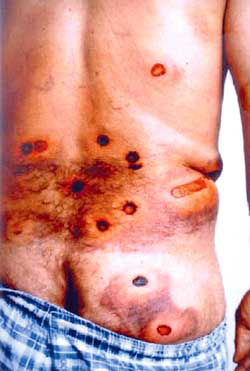
If a device with less kinetic energy would be more appropriate for the threat. A non-lethal level of force may be justified. Rapid application of multiple non-lethal projectiles may have the same compliance result as a single less-lethal "bean bag" shot without the visit to the hospital. This could save the non-compliant suspect from permanent injury and the department from potential litigation.
Every department should develop a matrix of use of force based on their department's experience with all their force alternatives available to them, coupled with regional and national uses of the same alternatives.
All force should be reviewed to ensure that it meets the standard that it was reasonable and necessary for the circumstance in which it was used. If it does not, the officer applying that force should be retrained to allow him to better utilize force in the future.
